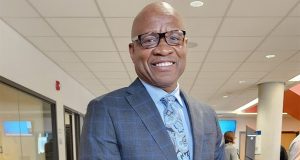Financial Experts Explain When It’s OK to Play It Safe – and When It’s Not
As people get closer to the age when they hope to retire, traditional wisdom calls for moving into more conservative – safer – investments, such as Treasury bonds and many fixed-income mutual funds.
“The problem is, what is ‘safe’ for one person may not be ‘safe’ for another, given the amount of money in their portfolios, how their investments are allocated, and what their retirement lifestyle goals are,” says financial advisor Haitham “Hutch” Ashoo, co-founder with advisor Chris Snyder of Pillar Wealth Management, LLC, (www.pillarwm.com).
“Some investors believe Certificates of Deposit and U.S. Treasury bonds are safe investments because of their backing, but the income they generate is so low, they may not be safe in terms of producing the income you need for 30 years of retirement.”
A better approach is to analyze how much investment risk you must assume to achieve what’s important to you, says Snyder.
“Your lifestyle goals determine your risk level, and your portfolio should be an allocation of stocks, bonds and cash that correlates directly with the risk level you need to assume.”
Snyder and Ashoo, co-authors of Four Factors The Affluent Must Know To Avoid Financial Disaster And Secure Their Dreams, available as a free download at (www.pillarwm.com), offer these tips for building a portfolio you likely won’t outlive:
• Don’t aim for earning a certain percentage rate simply because you consider it an acceptable one.
“Once you’ve identified your retirement lifestyle wants and needs, you can calculate how much they’ll cost. Subtract your guaranteed income from sources like Social Security and pensions, and the remainder is what your portfolio will need to generate, adjusted for inflation, for the rest of your life,” Ashoo says.
“Setting a goal of earning a 5, 6 or 8 percent return doesn’t work, because the markets fluctuate each year and are unpredictable,” he says. “It’s better to evaluate inflows and outflows during retirement and adjust for inflation. That process helps determine how much money you’ll need at certain points in your life, and the returns you’ll need.”
• Market timing and chasing hot managers is not the way to build a lasting, long-term portfolio.
“Modern Portfolio Theory, developed by Nobel Prize-winner Harry Markowitz, tells us that 90 percent of the return in your portfolio is based on the allocation of stocks, bonds and cash,” Snyder says.
“The percentages you allocate between these asset classes are far more important than timing the market or chasing around for the number one fund,” he says. “Wall Street prefers you spend your time focused on the wrong thing.”
• Don’t automatically spend when your portfolio earnings exceed expectations.
When your portfolio is growing at a rate that gives you a good amount of confidence you won’t outlive your money, are you safe to spend more when gains exceed your expectations?
“Everyone has different priorities – some may want to increase spending to enhance their lifestyle while others may take the opportunity to lower their risk even more, so they can sleep better at night,” Ashoo says.
He and Snyder say clients in that situation this year have responded in varying ways. Some have paid down mortgages with the extra money, moved up their plans to retire, traveled more or lowered their portfolio risk.
“What you need to remember is that gains can be taken away as quickly as they appeared,” Snyder says.
Haitham “Hutch” Ashoo and Chris Snyder are co-founders of Pillar Wealth Management LLC, (www.pillarwm.com), of Walnut Creek, Calif., specializing in customized wealth management advice to affluent families. Their unique five-step consultative process for new clients ensures they have a deep understanding of clients’ goals. With a combined 51 years of experience, they are the authors of numerous published works, have addressed thousands of investors nationwide, and have been interviewed on radio shows across the country.
 Pride News Canada's Leader In African Canadian & Caribbean News, Views & Lifestyle
Pride News Canada's Leader In African Canadian & Caribbean News, Views & Lifestyle





